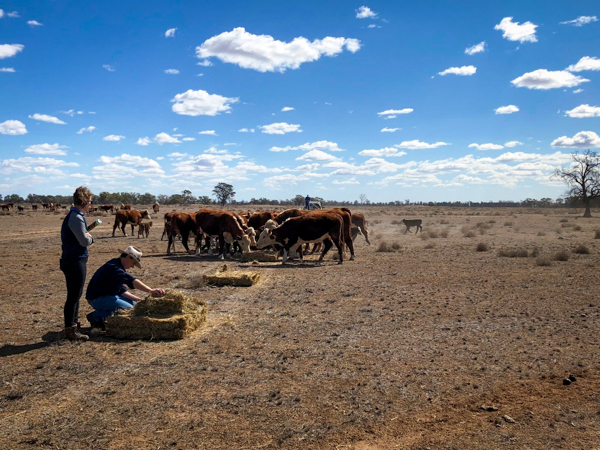Weeds in hay and grain – is there something new on your farm?
By Callen Thompson, Senior Land Services officer – Mixed Farming
Over the last twelve months, we have seen trucks carting hay and grain into the central west from all over the country. Now that we are getting a bit of rain, it is a good time to get out and have a look at what weeds are coming up in areas that fodder has been fed out or stored.
Our recommendation is:
Monitor – Identify – Control
Monitor
Hopefully all producers have a farm biosecurity plan, which included limiting the area that hay or grain is spread and marking feedout and storage areas on a farm map. If this has been done, it makes it a lot easier to get out and monitor these areas for weeds. It is also important to monitor paddocks that stock have had access to as some seed can be viable after traveling through the digestive system. Using confined feeding or a sacrifice paddock makes this much easier. While you are looking for weeds, check roadways where fodder has been carted as well as waterways and timbered areas as feral and native animals may be helping themselves to your brought in fodder. Lastly, if you know that your neighbour has been feeding stock it might be advisable to check your fencelines. Ideally you should monitor for weeds 12 days after a seasonal break rainfall event and you should continue doing this for at least two years.
Identify
Knowing where your hay has come from, having a vendor’s declaration and looking for weeds in the hay as you feed it out will give you an idea of what to look out for. If you see anything unusual contact your agronomist, your local council weeds officer or your LLS biosecurity office/ag advisor. If you suspect Herbicide resistant weeds have entered your property speak to LLS Ag Advisory staff or your agronomist about getting them tested.
Control
Weeds such as Parthenium weed or gamba grass are notifiable to the Department of Primary Industries and Regional Development (DPIRD) on 1800 680 244. DPIRD’s WeedWise website allows you to search for a weed and look up your duty in regards to biosecurity.
If you have identified weeds that are new to your property, control them early to prevent seed set. If practical, manually remove weeds (avoid contact with Parthenium weed). If chemical control is warranted, speak to your agronomist or advisor and always follow the label directions. It is important to re-inspect the area to make sure all weeds are controlled
In cropping regions such as Condobolin, we are particularly concerned about bringing in weeds with herbicide resistance. Wild radish and rye grass are already present on many properties, but there are populations of these weeds in Western Australia and South Australia which have resistance to many of the commonly used herbicides that we rely on. The seeds of these weeds could be in cereal or legume hay or grain.
Even weeds in locally produced hay could have different resistance spectrums to those on your own property. For this reason, we can’t stress enough the importance of limiting the area that hay or grain is spread on your farm. If you have put out hay and are noticing rye and radish in these areas, contact your agronomist to get resistance testing done.
The current environmental conditions have dictated the need to bring in fodder to feed livestock and there is a very good chance that some of the hay brought in has weeds in it. It is important to monitor areas where fodder has been used so you can identify and control any weed incursions quickly so they do not have an economic impact on you or your neighbours. There is support available from both Local Land Services and regional councils to assist producers to identify weeds and provide tactics for control.
If you see anything unusual. Call your Local Land Services agriculture advisor or Local Council’s weed officer.

Photo caption: Local Land Services staff looking for gamba grass in jarra grass hay from the Northern Territory. After speaking to the NT grower that supplied this hay, we learnt that he has stringent protocols in place to ensure his hay does not have weeds in it. Photo: Jill Kelly

